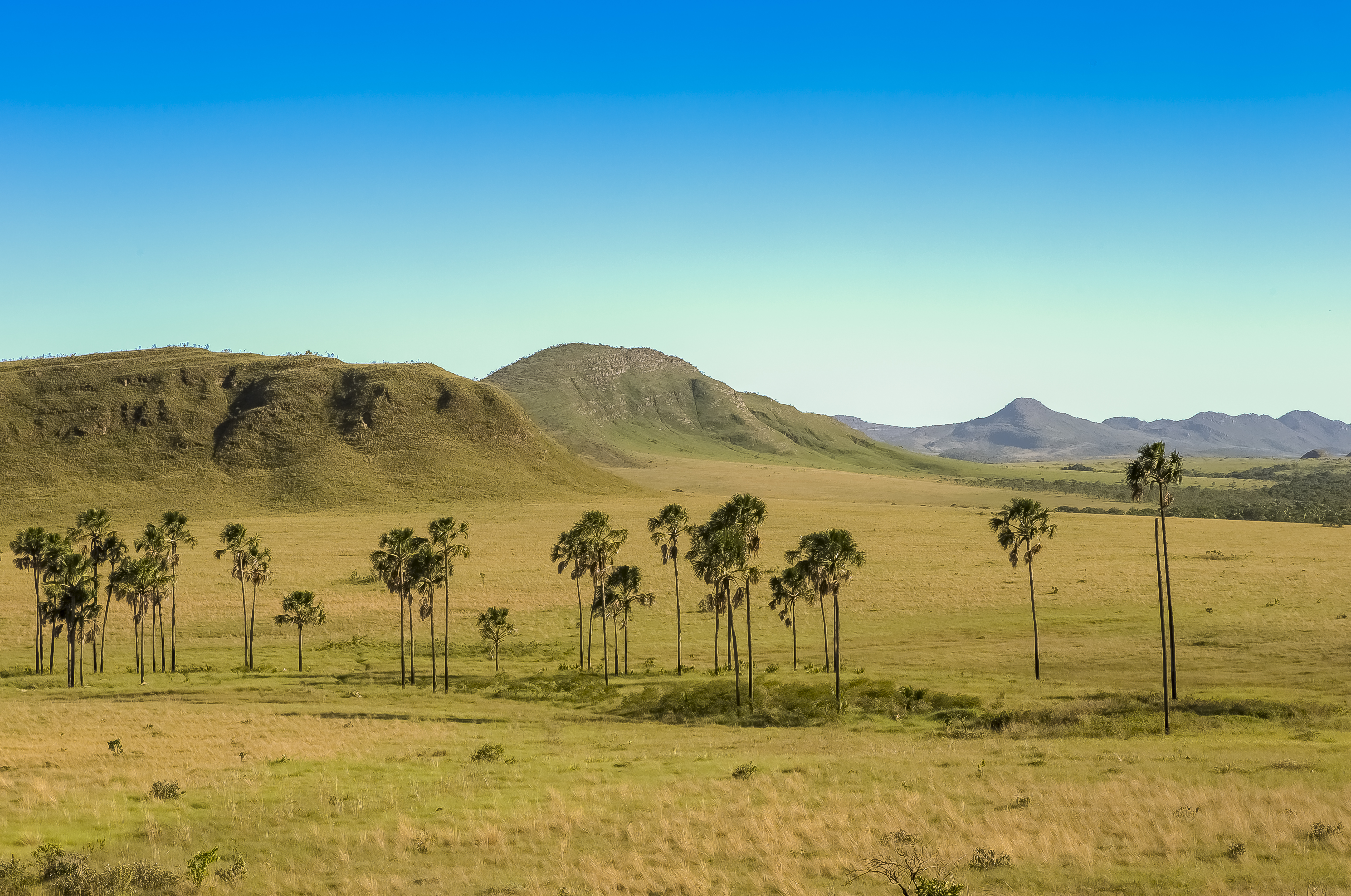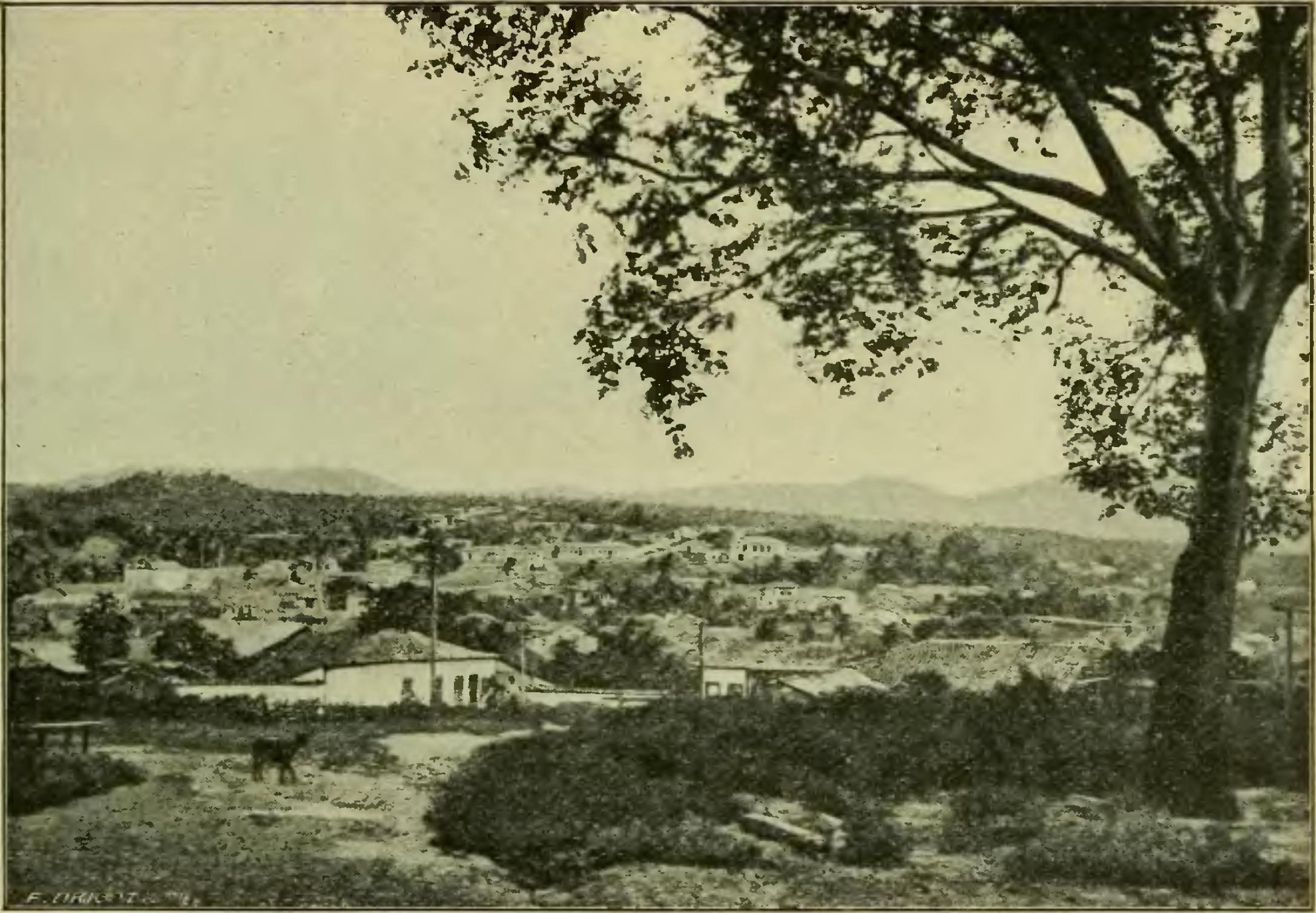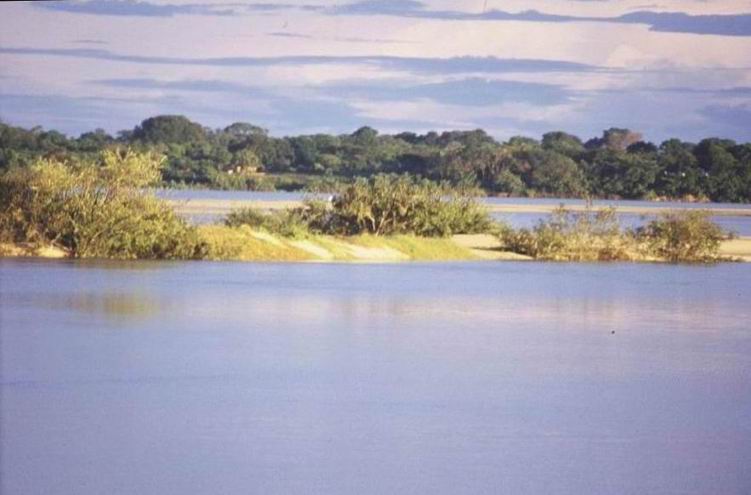|
São Miguel Do Araguaia
São Miguel do Araguaia is a city in northeastern Goiás state, Brazil. It is the northernmost municipality in Goiás, one of the largest too, and a major producer of cattle. São Miguel is located in the São Miguel do Araguaia Microregion and is one of the most distant cities from the state capital, Goiânia, which is 486 kilometers away. There are highway connections with Araguaçu, state of Tocantins, 63 kilometers to the north; Nova Crixás, 102 kilometers to the south; and the district of Luís Alves, 45 kilometers to the west, on the Araguaia River. Highway connections are made from Goiânia by GO-070 / Goianira / Inhumas / Itaberaí / BR-070 / Goiás / GO-164 / Araguapaz / Nova Crixás. History The region received its first settlers in 1952 with the arrival of José Pereira do Nascimento, Lozorik Belem, and Ovídio Martins de Souza who bought large areas of land and began to raise cattle. José Pereira do Nascimento was a Spiritualist healer and attracted people seeki ... [...More Info...] [...Related Items...] OR: [Wikipedia] [Google] [Baidu] |
Goiás
Goiás () is a Brazilian state located in the Center-West region. Goiás borders the Federal District and the states of (from north clockwise) Tocantins, Bahia, Minas Gerais, Mato Grosso do Sul and Mato Grosso. The state capital is Goiânia. With 7.2 million inhabitants, Goiás is the most populous state in the Center-West and the 11th most populous in the country. It has the ninth largest economy among Brazilian federative units. In Brazil's geoeconomic division, Goiás belongs to the Centro-Sul (Center-South), being the northernmost state of the southern portion of Brazil. The state has 3.3% of the Brazilian population and is responsible for 2.7% of the Brazilian GDP. The history of Goiás dates back to the beginning of the 18th century, with the arrival of pioneers from São Paulo. The Rio Vermelho region was the first to be occupied, where Vila Boa (later renamed Goiás) was founded. The development and settlement of the state took place, in a more intensified way, start ... [...More Info...] [...Related Items...] OR: [Wikipedia] [Google] [Baidu] |
Nova Crixás
Nova Crixás is a municipality in northeastern Goiás state, Brazil. It is one of the largest municipalities in the state and is the largest producer of beef cattle in the state. Nova Crixás is located in the Araguaia River valley and is part of the São Miguel do Araguaia Microregion. There are municipal boundaries with Crixás, Mundo Novo, Aruanã, São Miguel do Araguaia, Mozarlândia and the state of Mato Grosso. Neighboring towns are far away. Mundo Novo is 42 km. to the north; Crixás is 67 km. to the southeast; and Mozarlândia is 85 km. to the south. The distance to the state capital, Goiânia, is 370 km. Highway connections are made by GO-070 / Goianira / Inhumas / Itaberaí / BR-070 / Goiás / GO-164 / Araguapaz. The name is derived from the name of the town of Crixás and the Rio Crixás Mirim, which crosses the municipality and flows north into the Araguaia River. The region is bathed by numerous springs and rivers, with the most importa ... [...More Info...] [...Related Items...] OR: [Wikipedia] [Google] [Baidu] |
List Of Municipalities In Goiás
This is a list of the municipalities in the state of Goiás (GO), in the Central-West Region of Brazil. Goiás is divided into 246 municipalities, which are grouped into 18 microregions, which are grouped into 5 mesoregions. Ordered by regions Ordered by population List of municipalities in Goiás by population, in descending order, based on estimates from IBGE for 1 July 2005. More than 500,000 inhabitants More than 100,000 inhabitants More than 50,000 inhabitants More than 25,000 inhabitants More than 10,000 inhabitants More than 5,000 inhabitants Fewer than 5,000 inhabitants Ordered by area and population This is a list of municipalities in the state of Goiás, Brazil. Population figures are estimates from 2005. Area figures are from 2002. See also *Geography of Brazil *List of cities in Brazil Brazil has a high level of urbanization with 87.8% of the population residing in Urban area, urban and Metropolitan area, metropolitan areas. T ... [...More Info...] [...Related Items...] OR: [Wikipedia] [Google] [Baidu] |
Uruaçu
Uruaçu is a city and municipality in north Goiás state, Brazil. Geography Uruaçu is located north of Anápolis and Goiânia on the important interstate highway BR-153, which links Brasília to Belém. It is 269 km. from Goiânia and 244 km. from Brasília. It belongs to the Porangatu Microregion. Municipal boundaries are with: *North: Nova Iguaçu de Goiás and Campinorte *South: Hidrolina and Santa Rita do Novo Destino *East: Niquelândia *West: Hidrolina On the west the municipal boundary follows the Serra Dourada mountains, where the Passa Três river has its source and supplies the city with its drinking water. On the east the boundary is formed by the Serra da Mesa reservoir (43 meters deep and 1,784 km2 in area). The climate is moist tropical, with maximum temperatures of 38 °C, minimums of 18 °C and an average of 28 °C. History The origin of this town was the Passa Três ranch acquired by the Fernandes family in 1910 and located ... [...More Info...] [...Related Items...] OR: [Wikipedia] [Google] [Baidu] |
United Nations
The United Nations (UN) is an intergovernmental organization whose stated purposes are to maintain international peace and international security, security, develop friendly relations among nations, achieve international cooperation, and be a centre for harmonizing the actions of nations. It is the world's largest and most familiar international organization. The UN is headquarters of the United Nations, headquartered on extraterritoriality, international territory in New York City, and has other main offices in United Nations Office at Geneva, Geneva, United Nations Office at Nairobi, Nairobi, United Nations Office at Vienna, Vienna, and Peace Palace, The Hague (home to the International Court of Justice). The UN was established after World War II with Dumbarton Oaks Conference, the aim of preventing future world wars, succeeding the League of Nations, which was characterized as ineffective. On 25 April 1945, 50 governments met in San Francisco for United Nations Conference ... [...More Info...] [...Related Items...] OR: [Wikipedia] [Google] [Baidu] |
Minas Gerais
Minas Gerais () is a state in Southeastern Brazil. It ranks as the second most populous, the third by gross domestic product (GDP), and the fourth largest by area in the country. The state's capital and largest city, Belo Horizonte (literally "Beautiful Horizon"), is a major urban and finance center in Latin America, and the sixth largest municipality in Brazil, after the cities of São Paulo, Rio de Janeiro, Salvador, Brasília and Fortaleza, but its metropolitan area is the third largest in Brazil with just over 5.8 million inhabitants, after those of São Paulo and Rio de Janeiro. Nine Brazilian presidents were born in Minas Gerais, the most of any state. The state has 10.1% of the Brazilian population and is responsible for 8.7% of the Brazilian GDP. With an area of —larger than Metropolitan France—it is the fourth most extensive state in Brazil. The main producer of coffee and milk in the country, Minas Gerais is known for its heritage of architecture and colonia ... [...More Info...] [...Related Items...] OR: [Wikipedia] [Google] [Baidu] |
Araguapaz
Araguapaz is a municipality in northwestern Goiás state, Brazil. The population is 7,783 (2020) in a total area of 2,194 km2. It is a major producer of cattle. Location and Municipal Boundaries Araguapaz is located 268 kilometers northwest of the state capital, Goiânia, in the Rio Vermelho Microregion. Connections with Goiânia are made by highways GO-070 / Goianira / Itaberaí / Goiás / GO-164 / Faina. Highway GO-530 continues northwest for 53 kilometers to Aruanã on the Araguaia River. Municipal boundaries: *North: Mozarlândia *South: Faina *East: Morro Agudo de Goiás *West: Aruanã and Matrinchã It is in the mini-basin of the Rio do Peixe, a tributary of the Araguaia River. Another important river in the region is the Tesouras. Demographic and Political Data *Population density: 3.41 inhabitants/km2 (2007) *Population growth rate 2000/2007: 0.33.% *Urban population: 5,218 *Rural population: 2,264 *Eligible voters: 5,676 (12/2007) *City government in 2005: ... [...More Info...] [...Related Items...] OR: [Wikipedia] [Google] [Baidu] |
Goiás, Goiás
Goiás (also known as Goiás Velho, Old Goiás) is a municipality in the state of Goiás in Brazil. Its population was 22,381 (2020 est.) and its area is 3,108 km2. It is the former capital of the state and preserves much of its colonial heritage. In 2002, it became a UNESCO World Heritage Site. World Heritage Site It used to be the old state capital of Goiás up until 1937 when the government seat was transferred to the then-recently built Goiânia. It was founded by the famed Bandeirante explorer Bartolomeu Bueno da Silva, nicknamed the ''Anhangüera'', and was called in colonial times Vila Boa de Goyaz ("Good Village of Goyaz" in archaic Portuguese). Given its historical importance, the historical center of Goiás was included on the UNESCO's World Heritage list in 2001. Location Municipal boundaries: *North: Faina *South: Mossâmedes *East: Itaberaí *West: Itapirapuã and Matrinchã *Districts: Calcilândia, Buenolândia, Davidópolis, São João e Uvá. *Povoado (vill ... [...More Info...] [...Related Items...] OR: [Wikipedia] [Google] [Baidu] |
Itaberaí
Itaberaí is a municipality in central Goiás state, Brazil. Itaberaí is a large producer of agricultural products including corn, rice, soybeans, tomatoes, and sugarcane. Location Itaberaí is located 92 kilometers north-west of Goiânia on state highway GO-070 and 36 kilometers southeast of the former capital, Cidade de Goiás. Itaberaí is part of the Anápolis Microregion. *Neighboring municipalities: Americano do Brasil, Anicuns, Araçu, Avelinópolis, Cidade de Goiás, Heitoraí, Itaguari, Itaguaru, Itauçu, Mossâmedes, Taquaral de Goiás and Uruana. *Districts (distritos), villages (povoados), and hamlets (aglomerados): – Povoados: Congomé, Santa Rita and Santo Antônio. – Aglomerados: Lobeira, São Benedito and São José do Retiro. Climate The climate is humid tropical with regular rains in the summer. The most important rivers are Rio das Pedras, Rio Uru, which has its source in the Serra Dourada and forms a boundary with the municipality of Goiás. Demog ... [...More Info...] [...Related Items...] OR: [Wikipedia] [Google] [Baidu] |
Inhumas
Inhumas () is a municipality in central Goiás state, Brazil. The population was 52 866 (2019 estimate) in a total area of 613.3 km² (10/10/2002). Inhumas is a large producer of sugarcane, poultry, milk, and meat. Distances and Location *Distance to the state capital: 54 km. *Distance to regional center (Anápolis): 73 km. *Highway connections: state highway GO-070 north from Goiânia, through Goianira and then 22 km. north. Inhumas is on the Meia Ponte River. Neighboring municipalities are Itauçu, Petrolina Petrolina is a municipality located in the southernmost point of the state of Pernambuco, in Northeast Brazil, in the valley of the São Francisco River. The population was 354,317 in 2020, and the total area is km², making it the largest m ..., Damolândia, Brazabrantes, Caturaí, and Araçu. Demographics *Population growth rate 1996/2006: 1.05.% *Population in 2007: 44,983 *Population in 1980: 31,430 *Urban population in 2007: 42,421 *Rural po ... [...More Info...] [...Related Items...] OR: [Wikipedia] [Google] [Baidu] |
Goianira
Goianira is a municipality in central Goiás state, Brazil, located 32 kilometers northwest of the state capital, Goiânia. The population was 45,296 (2020) with a total area of 200.4 km² (10/10/2002). Goianira is becoming a major producer of shoes. Goianira is four kilometers east of highway BR-457 / GO-415, which links Goiânia to Aruanã. It is in the Meia Ponte River valley. Neighboring municipalities are: *north: Caturaí *south: Goiânia and Trindade *east: Santo Antônio de Goiás *west: Avelinópolis History Goianira was founded in 1920 by Padre Pelágio Sáuter, with the name São Geraldo. In 1935, São Geraldo became a district. In 1940, it served as a base for the construction of the new capital of the state of Goiás, and the name was changed to Itaim. This name lasted until 1942 when it was changed to Itaité. After a popular movement, the name was changed back to São Geraldo. This name lasted until 1943, when it was given its current name, Goianira. ... [...More Info...] [...Related Items...] OR: [Wikipedia] [Google] [Baidu] |
Araguaia River
The Araguaia River ( pt, Rio Araguaia , Karajá: ♂ ''Berohokỹ'' eɾohoˈkə̃ ♀ ''Bèrakuhukỹ'' ɛɾakuhuˈkə̃ is one of the major rivers of Brazil though it is almost equal in volume at its confluence with the Tocantins. It has a total length of approximately 2,627 km. Geography The Araguaia River comes from Goiás-Mato Grosso south borders. From there it flows northeast to a junction with the Tocantins near the town of São João. Along its course, the river forms the border between the states of Goiás, Mato Grosso, Tocantins and Pará. Roughly in the middle of its course the Araguaia splits into two forks (with the western one retaining the name Araguaia and the eastern one being called the Javaés River). These later reunite, forming the Ilha do Bananal, the world's largest river island. The vein of the Javaés forms a broad inland where it pours back into the main Araguaia, a 100,000 hectare expanse of igapós or flooded forest, blackwater river channels, an ... [...More Info...] [...Related Items...] OR: [Wikipedia] [Google] [Baidu] |



